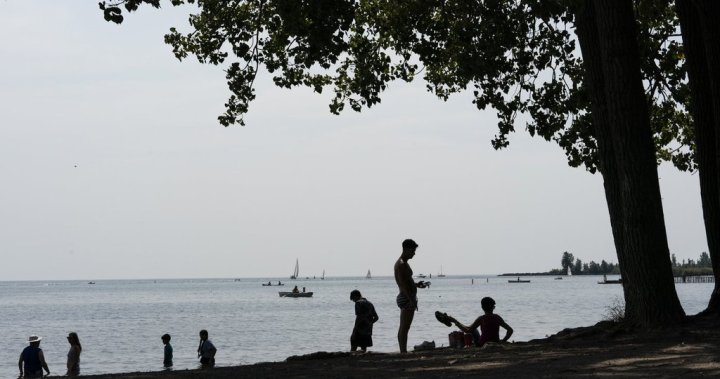The sweltering blanket of heat descending upon Canada this week has meteorologists issuing stark warnings as temperatures soar to dangerous levels across multiple provinces. What experts are calling a textbook “heat dome” is wreaking havoc on the nation’s weather patterns, creating a pressure-cooker effect that could shatter temperature records from British Columbia to the Maritime provinces.
“We’re witnessing an atmospheric phenomenon that essentially traps hot air over a specific region for an extended period,” explains Dr. Marta Sanchez, senior climatologist at Environment Canada. “The current system is particularly concerning due to its geographical spread and intensity, making it one of the most significant heat events we’ve tracked in recent years.”
The heat dome—a meteorological term describing a persistent area of high pressure trapping warm air like a lid on a pot—has already pushed temperatures past 40°C in parts of British Columbia’s interior. Vancouver residents face unusual overnight lows remaining above 22°C, offering little relief from daytime heat that has overwhelmed cooling centers across the city.
In the Prairie provinces, the situation appears equally dire. Winnipeg has implemented emergency heat protocols, opening additional cooling facilities as temperatures there approach 38°C with humidity values creating a “feels like” temperature exceeding 45°C. Agricultural experts express growing concern for livestock and crops across the region, with Alberta reporting accelerated drought conditions affecting wheat and canola production.
“This isn’t just uncomfortable weather—it’s potentially deadly,” warns Dr. Ahmed Rahman, emergency medicine specialist at Toronto General Hospital. “We’re already seeing a 30% increase in heat-related hospital admissions, particularly among elderly populations and those with underlying health conditions.”
Ontario and Quebec residents face particular challenges as urban heat island effects compound the dome’s impact. Toronto’s downtown core is recording temperatures nearly 5°C higher than surrounding areas due to concrete and asphalt absorption, while Montreal has activated its extreme heat emergency plan, converting public buildings into cooling centers and extending swimming pool hours.
Power grid operators across multiple provinces report unprecedented strain on electrical infrastructure as air conditioning usage spikes to record levels. “We’re operating at 95% capacity,” confirms Hydro-Québec spokesperson Jean Tremblay. “We’ve implemented rolling brownouts in certain districts to prevent catastrophic system failures.”
Climate scientists caution that while individual heat events cannot be directly attributed to climate change, the intensity and frequency of such phenomena align with projected warming patterns. “What we’re experiencing now provides a sobering glimpse into Canada’s climate future,” notes Dr. Helena Wong, research director at the Climate Resilience Institute in Ottawa. “Models suggest heat domes of this magnitude could become triennial events by 2050 rather than once-in-a-decade occurrences.”
The current heat dome is expected to persist for at least another week, with eastern provinces likely experiencing the most severe conditions by this weekend. Environment Canada has issued extreme heat warnings for over 70% of the country’s population centers, advising residents to limit outdoor exposure, check on vulnerable neighbors, and maintain hydration.
As Canadians grapple with this unprecedented weather pattern, the question emerges with growing urgency: Is our infrastructure—from power grids to healthcare systems to urban planning—adequately prepared for a future where extreme heat becomes not the exception, but the rule?


















